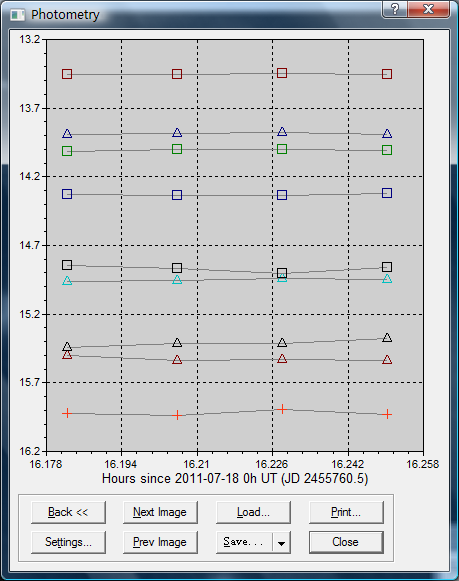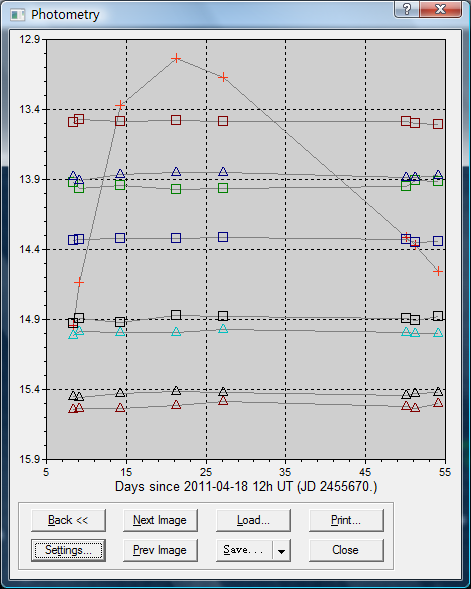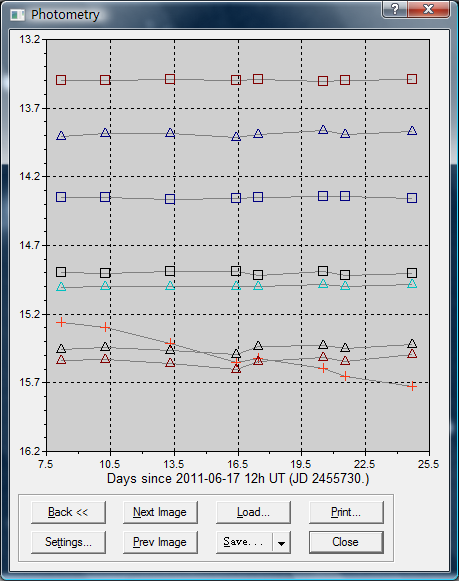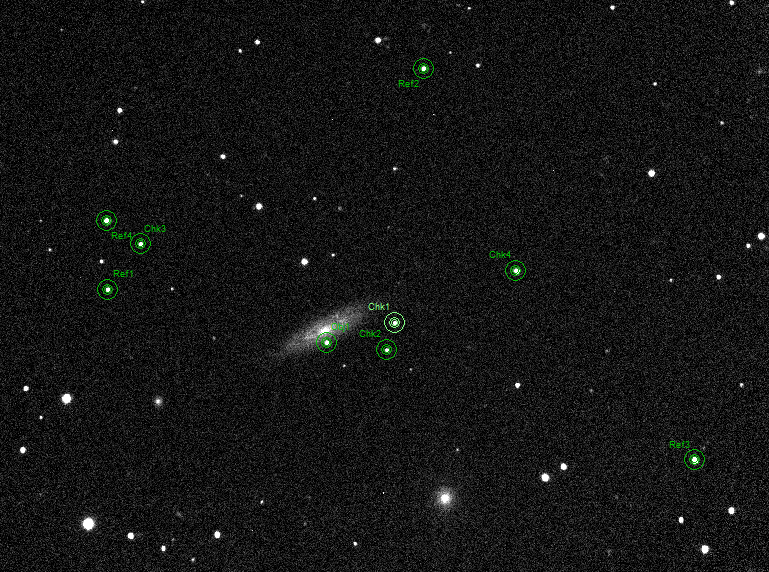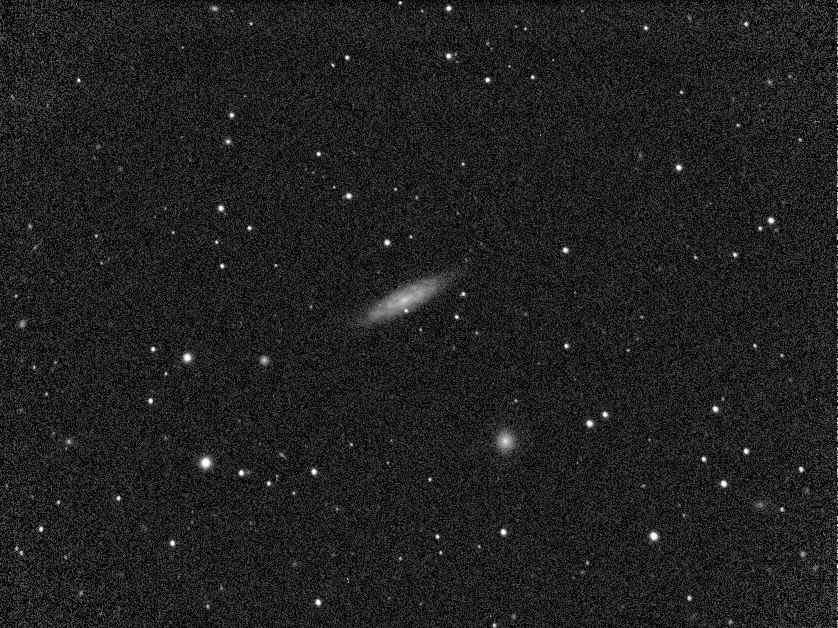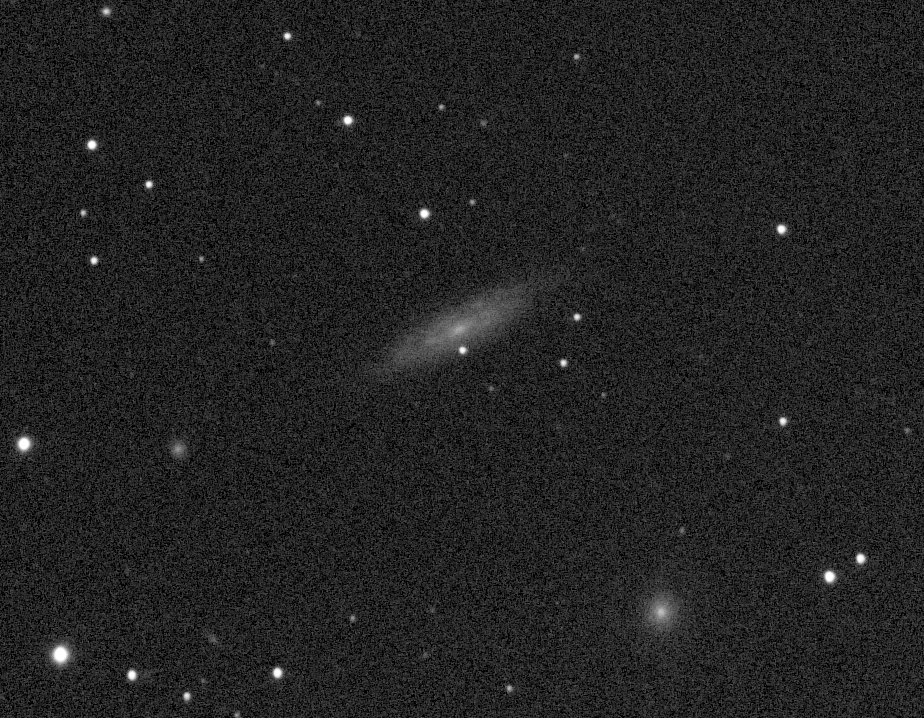 |
| Light Curve Plot MaxIm DL: CV mag Focas II: CR mag |
Photometric work with MaxIm DL V5. The souece of V-mags of nearby reference stars were taken from APASS). Checked stars as well were selected in the vicinity with similar magnitudes to the supernova's. The Aperture Radius was set to 5, the Gap Width to 4, and Annulus Thickness to 8.
Plots generated by MaxIm DL.
|
|
|
Plus: SN2011by |
For comp. stars and checked stars see here.
Similar work with Focas II, R band from star catalog USNO-A2.0 chosen:

The image at 16:13:00 with a SNR evidently higher than others was a stacked image from all the other four images in average.
Copyright © Man-To Hui 2011/08/03
Result from 2011/04/26 - 2011/07/11
I attempted photometric work by implementing the photometry function in MaxIm DL V5. I chose the V-mags of nearby reference stars (source from APASS). Checked stars as well were selected in the vicinity with similar magnitudes to the supernova's. The Aperture Radius was set to 6, the Gap Width to 4, and Annulus Thickness to 8.
Plots generated by MaxIm DL.
|
|
|
2011/04/26 -
2011/06/11 |
|
|
|
2011/06/25 -
2011/07/11 |
In general, the supernova SN 2011by now is experiencing a declination after peaking its culmination in early May. Unfortunately majority of the images in the second leg from Jun 25 to Jul 11 are unfavorable. In particularly, images on Jul 05 and Jul 06 are totally futile owing to the extremely poor quality thanks to the nasty weather. Hence, the measured results are insufficiently convincible. Instead, combination with observations from other stations will become much more meaningful.
Hereafter the graphs are listed by date separately in order to show the quality.
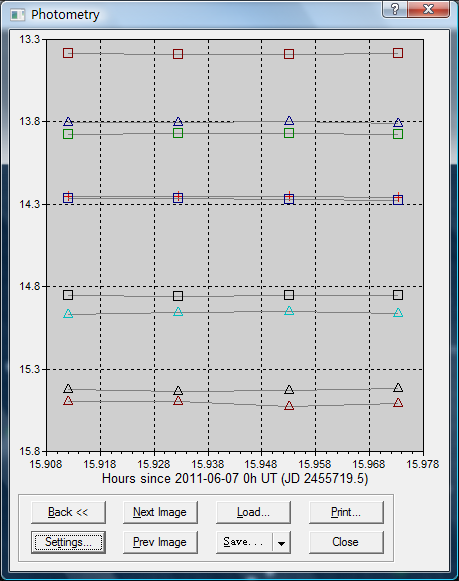 |
|
2011/06/07 |
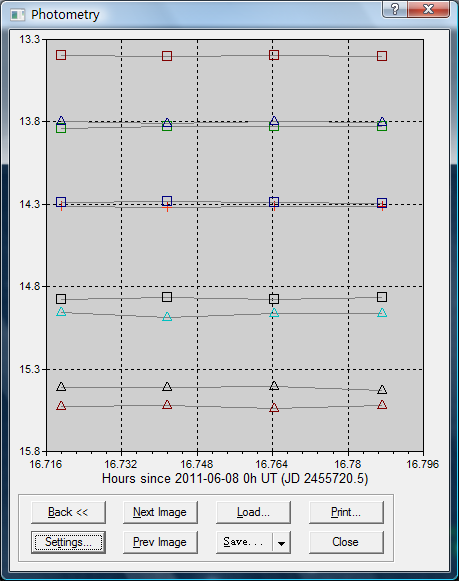 |
|
2011/06/08 |
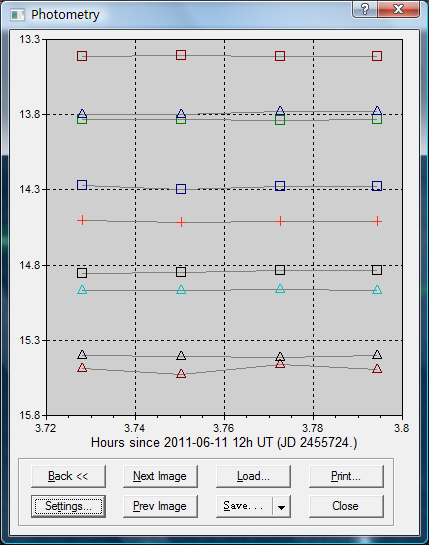 |
|
2011/06/11 |
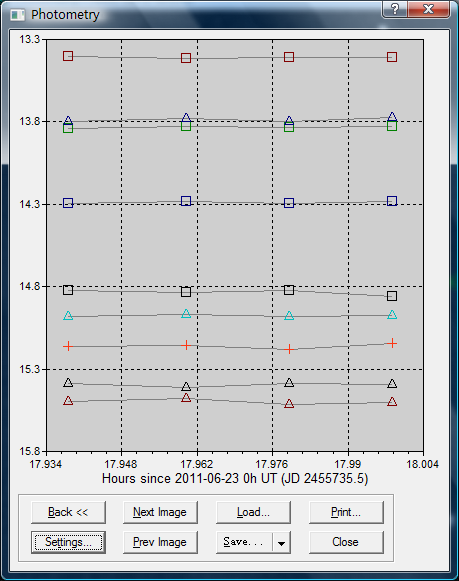 |
|
2011/06/23 |
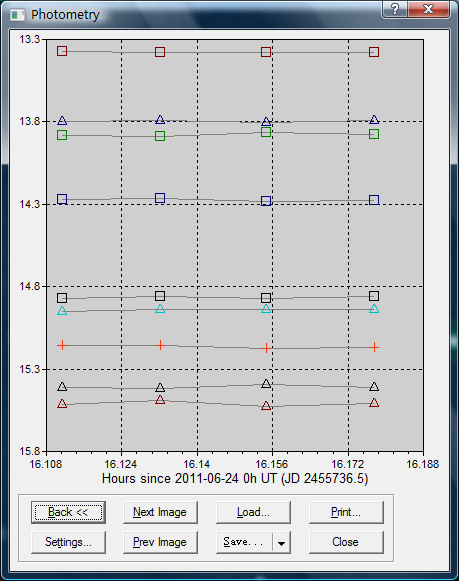 |
|
2011/06/24 |
 |
|
2011/06/25 |
 |
|
2011/06/27 |
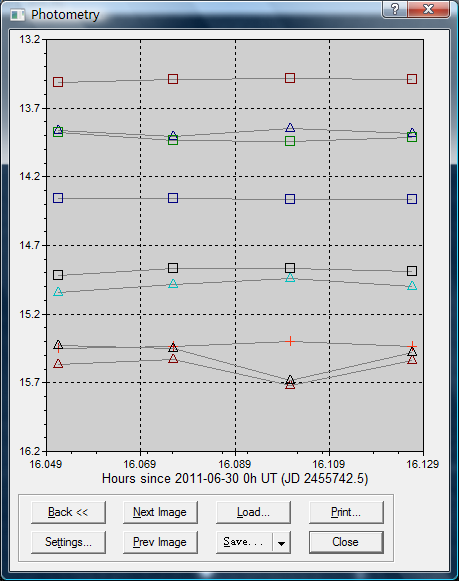 |
|
2011/06/30 The comp. stars and checked stars remain unchanged. Poor sky therefore the quality photometry is worsened. |
 |
|
2011/07/03 The comp. stars and checked stars remain unchanged. Poor sky therefore the quality photometry is worsened. |
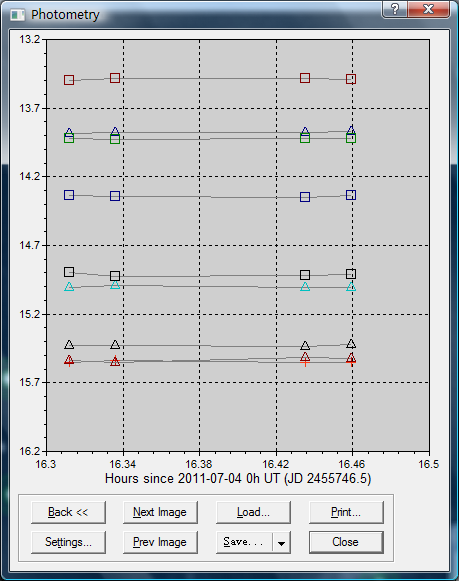 |
|
2011/07/04 The comp. stars and checked stars remain unchanged. |
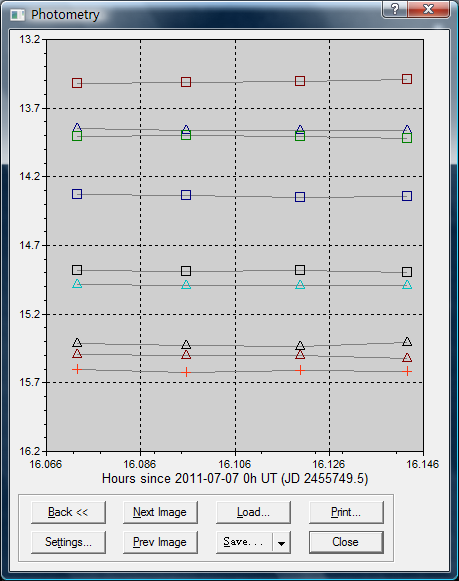 |
|
2011/07/07 The comp. stars and checked stars remain unchanged. |
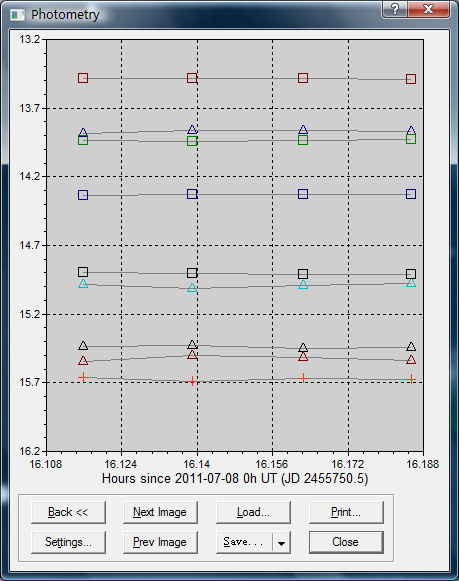 |
|
2011/07/08 The comp. stars and checked stars remain unchanged. |
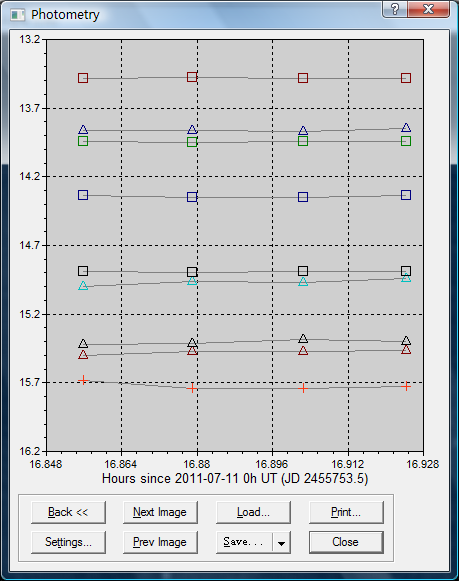 |
|
2011/07/11 The comp. stars and checked stars remain unchanged. The aperture radius is set to 6-pixel instead of 7-pixel. |
The stars I used to conduct photometric work:
The same work by applying Focas II is presented below with different from which band I selected, here R band from star catalog USNO-A2.0 chosen. I measured the magnitudes of the supernova in Astrometrica with an aperture radius selected to 6 prior to working with Focas II. The date and time are noted in the following figures.
First let us see the results from the beginning to the latest date thus far. The stacked images were processed in Astrometrica by adding means, if the images form a quadruplet on that day.
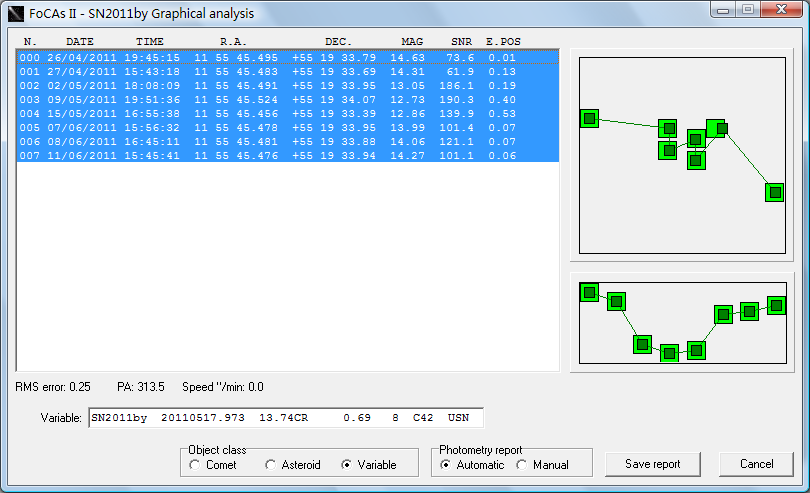
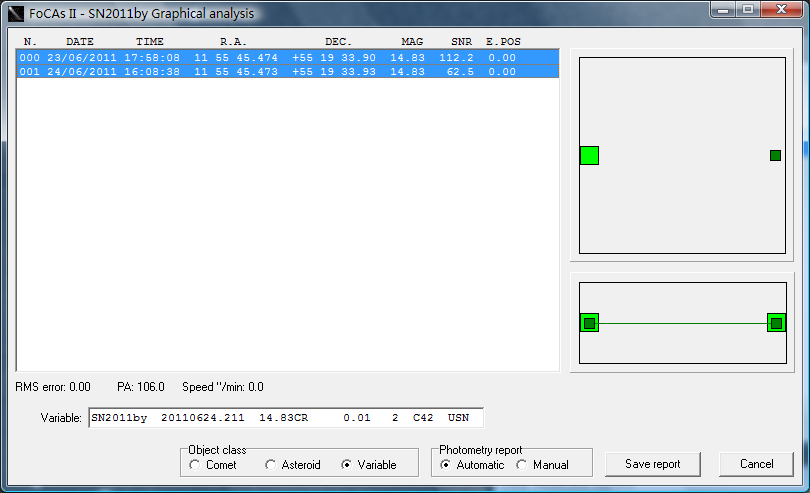

And now separately by date:
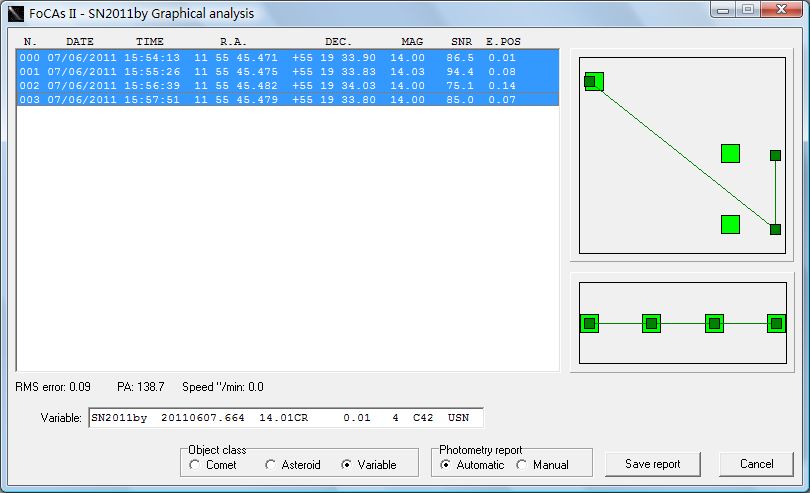

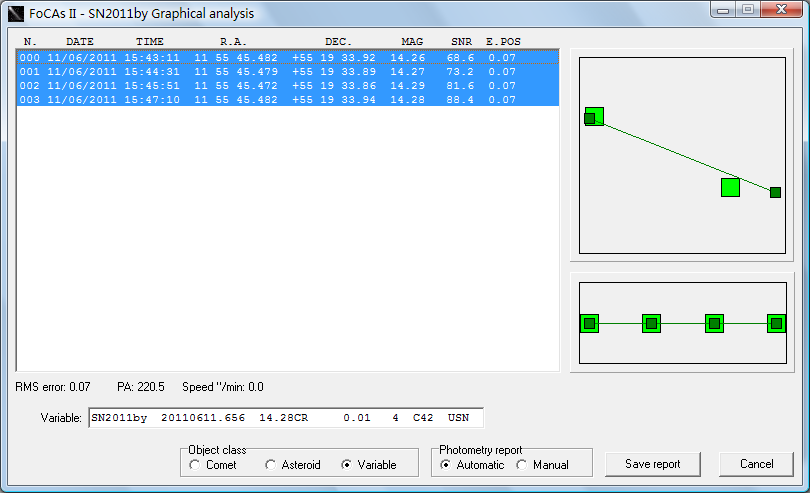
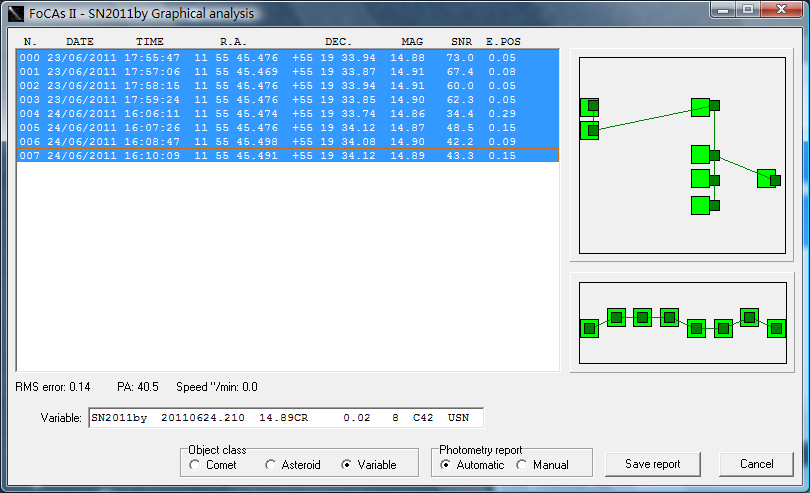

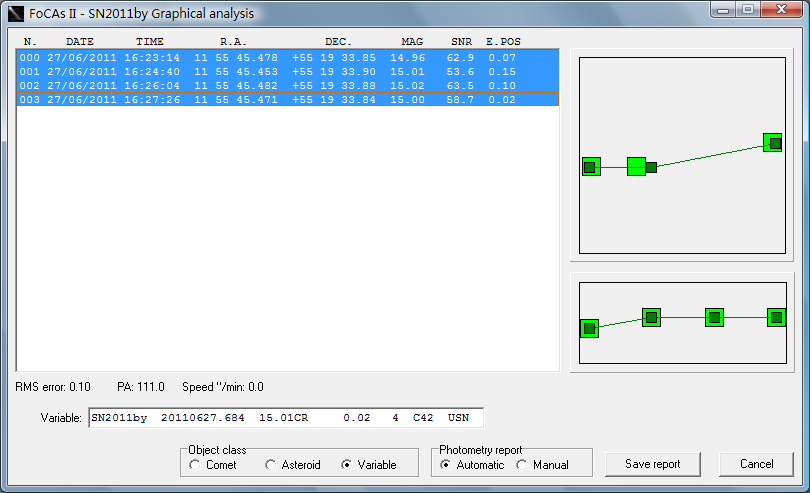
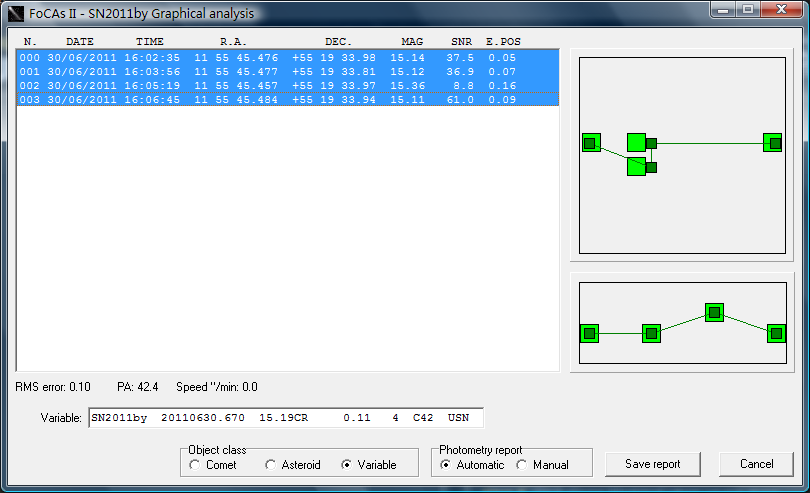

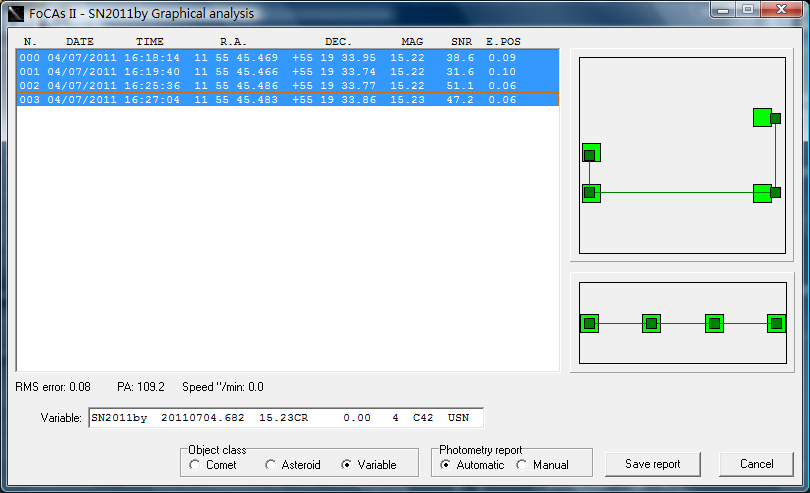

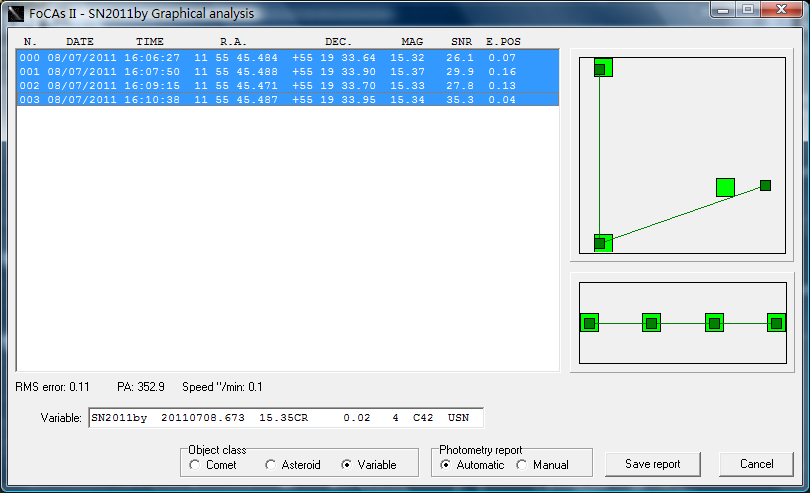
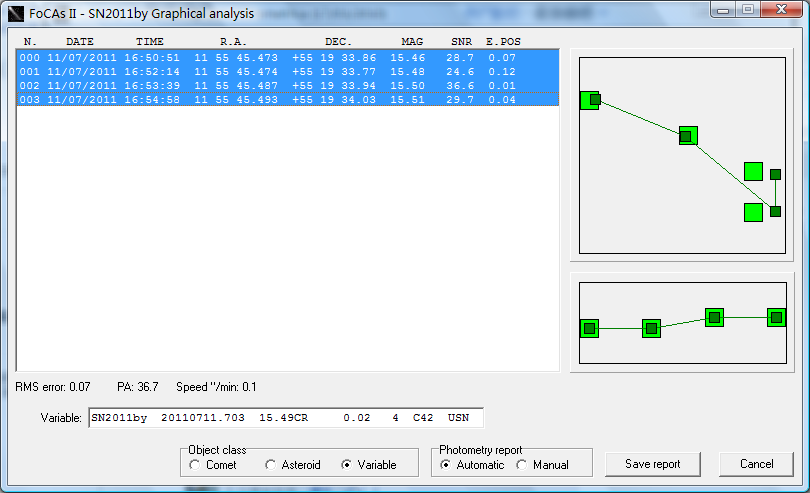
Copyright © Man-To Hui 2011/07/13
Copyright © Man-To Hui
